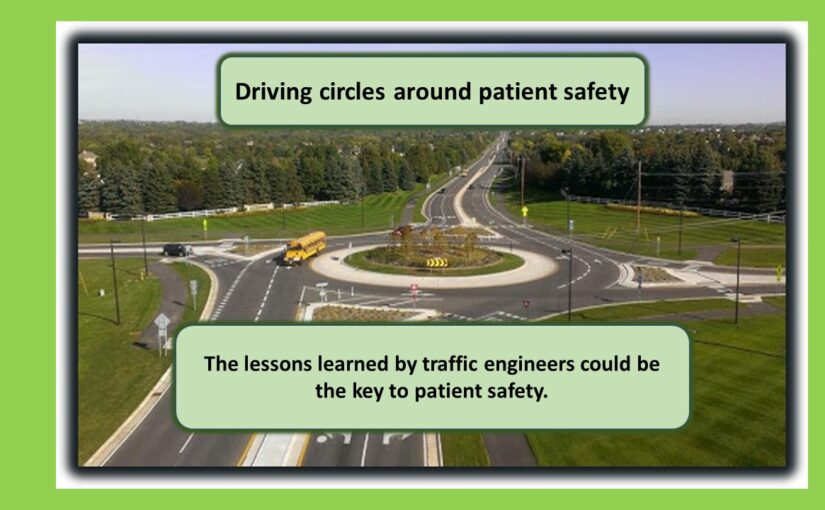By Thomas Davis, DNAP, MAE, CRNA
According the USA today, 42,060 people died due to auto accidents in the United States in 2020. In comparison, Yale University used revised criteria to define death due to preventable medical error and found that 22,000 patients were lost in 2020 due to needless mistakes. Both the auto and healthcare statistics are causes for alarm and have prompted professionals in each area to develop methods to reduce the tragic and unnecessary loss of life.
For decades, traffic engineers have struggled with developing “crash proof” intersections as a way to improve safety. Knowing that the two most common causes of highway death are the high impact head on collision and the T-bone type of crash, roadway designers in Scandinavia shifted their thinking away from trying to prevent all accidents and focused on eliminating those that cause death. Suddenly, traffic circles were installed throughout the region and the results were impressive.
The magic of traffic circles
Traffic circles are unlike traditional intersections with or without stoplights. The approach to a traffic circle is well marked and traffic must slow before entering the circle. Once at the circle, drivers must observe other vehicles and coordinate with other drivers to safely enter the flow of traffic. When mistakes are made, the result is a low impact fender bender rather than a full impact crash. Cars may be dented, and drivers may be bruised but serious injury and death seldom happen in a traffic circle.
Safety circles in healthcare
What would be the result if proponents of patient safety took the Scandinavian approach and developed healthcare safety circles? What would it look like if our patient flow in the operating room resembled vehicle flow through a traffic circle?
- We would be alerted when we are approaching an event that is known to have risk to the patient.
- We would slow our pace and become more attentive.
- We would communicate and coordinate with others involved in the process.
- Our activities would merge with others involved in the process and we would share a common interest for getting everybody safely through the event.
- We might experience fender benders now and then, but fatalities would be eliminated.
Converting the traffic circle safety concept into patient safety circles requires a commitment from healthcare providers to value patient safety above production pressure or maximum efficiency. Here are but a few areas where we can slow the pace, become more attentive, collaborate with others, and merge our activities to ensure patient safety:
- Preop handoff from the prep area to the anesthesia provider
- Preparation of drugs and equipment
- limiting noise and distractions during induction
- The surgical timeout prior to incision
- Postoperative handoff to PACU or ICU
Be an advocate for your patients and control your workflow as if you were driving your car through a traffic circle…we can greatly reduce preventable medical errors.
Tom is an experienced leader, author, and requested speaker. Click here for a video introduction to Tom’s talk topics.
